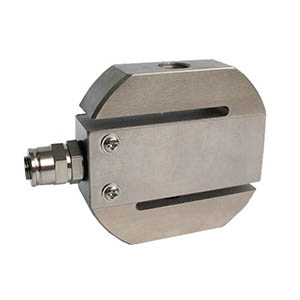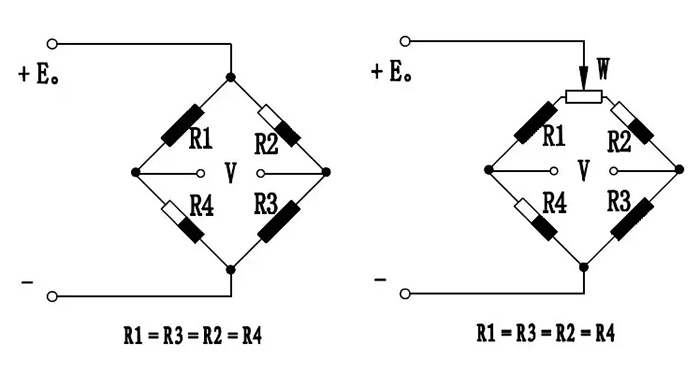How does Load Cells Measure Force?
In current society, there are many technological products that measure the amount of force, such as measuring pressure, tension, gravity and so on. A load cell, as the name suggests, is an instrument used to measure the weight of an object. So do you know what a load cell is? And how does it measure the amount of force? ATO.com will provide you with detailed information about load cells. Please take a look in the following.
Contents
Load Cell Basics
A load cell is a force transducer, actually a device that converts a mass signal into a measurable  electrical signal output. The load cell has a more prominent place in basic disciplinary research. Adapted load cells allow access to a large amount of information that is not directly accessible to the human senses. Many obstacles in basic scientific research lie above all in the difficulty of obtaining information about objects, and the emergence of some new mechanisms and highly sensitive detection sensors often leads to breakthroughs within the field. And the development of some sensors is often a precursor to the development of some marginal disciplines.
electrical signal output. The load cell has a more prominent place in basic disciplinary research. Adapted load cells allow access to a large amount of information that is not directly accessible to the human senses. Many obstacles in basic scientific research lie above all in the difficulty of obtaining information about objects, and the emergence of some new mechanisms and highly sensitive detection sensors often leads to breakthroughs within the field. And the development of some sensors is often a precursor to the development of some marginal disciplines.
According to the frequency of use, there are the main types of load cells: strain gauge load cells, strain gauges, pneumatic load cells, hydraulic load cells, etc. In addition to their use in everyday life, load cells also permeate an extremely wide range of fields such as industrial production, cosmic development, ocean exploration, environmental protection, resource investigation, medical diagnosis, bioengineering and even heritage conservation. It is no exaggeration to say that almost every modern project, from the vast expanse of space, the vastness of the oceans, to various complex engineering systems, is inseparable from a wide range of sensors.
Working Principle of Force Measurement
Load cells work by converting forces such as tension, compression, pressure or torque into measurable and standardized electrical signals. It has to mention strain gauges here. The strain gauge is the sensing part of the load cell and the most important component of the sensor. Its function is to convert the magnitude of the external force into an electrical output. It converts the force of gravity acting on the object to be measured into a measurable output signal in a certain proportion. As the force applied to the load cell increases, the electrical signal changes proportionally to the numerical magnitude of the force expressed on the scale.
Firstly, the strain gauge is fixed to the elastomer. The external force causes a deformation of the elastomer and a subsequent deformation of the strain gauges on the elastomer. Because the change in the external shape of the strain gauges, their resistance value will change accordingly. The top left and bottom right strain gauges are compressed, then the resistance film becomes shorter and the resistance value becomes smaller. The upper right and lower left strain gauges are stretched, then the resistance film becomes longer and the resistance value becomes larger. For each load cell, at least four strain gauges are connected together to form a Wheatstone bridge. When a force is applied to the load cell causing a change in the resistance of the strain gauges, the bridge becomes unbalanced. With a constant excitation voltage, the magnitude of the output signal is proportional to the force applied to the load cell.
In order to achieve the value of the measurement result to be converted on the display, the load cell can generally be connected to a PLC or a secondary meter to complete the target. Combining the load cell with a secondary meter and the analogue input of a PLC allows the voltage signal to be read directly. The mv-level voltage signals are generated by the load cell being bent by the weight and require a secondary meter for conversion, which must involve a loss. This loss is not really significant, but it can greatly affect the accuracy of the value.

Other Considerations
The force measurement of a load cell is not only related to the internal operating principle, but also to the method of use and the working environment. The wrong environment can lead to various errors such as characteristic errors, dynamic errors, insertion errors and environmental errors. These also have a significant influence on the accuracy of the measured values.
Because the load cell is actually an output device that transfers mass signal into a measurable electrical signal, so we must first consider the actual working environment in which the sensor is located. It is essential for the correct choice of sensor. This is crucial to the correct choice of load cell. It has influence on the normal operation of the load cell, its safety and service life, and even the reliability and safety of the whole scale.
In general, high temperature environments can cause problems such as melting of the coating material, opening of the solder joints and structural changes in the stress of the elastomer. Dust and humidity can cause short-circuiting of the sensor and corrosive environments can cause damage to the sensor elastomer or produce short-circuiting. And electromagnetic fields can cause interference with the sensor output. In the corresponding environmental factors, we must choose the corresponding force measuring load cell in order to meet the necessary weighing accuracy requirements.

